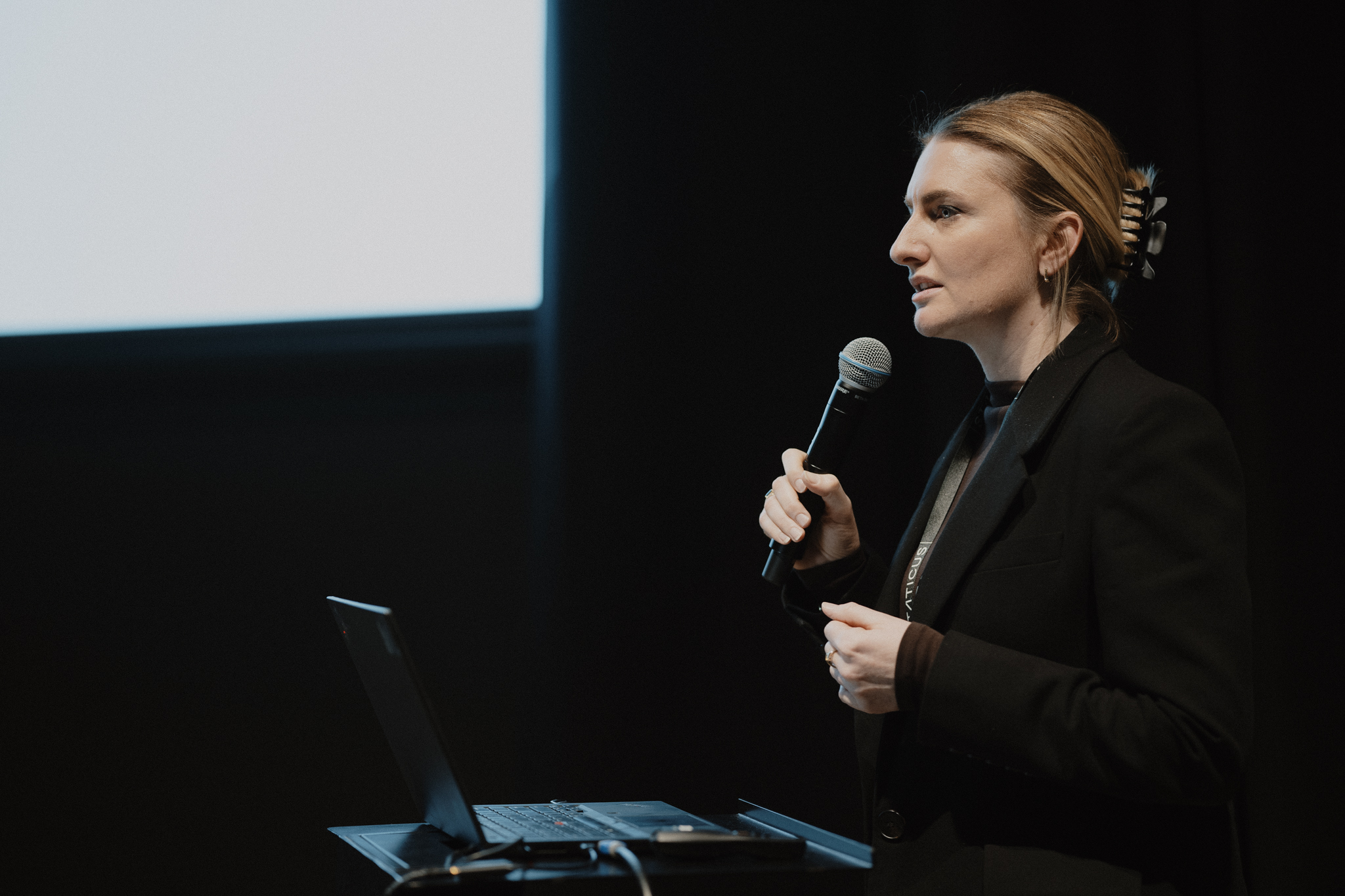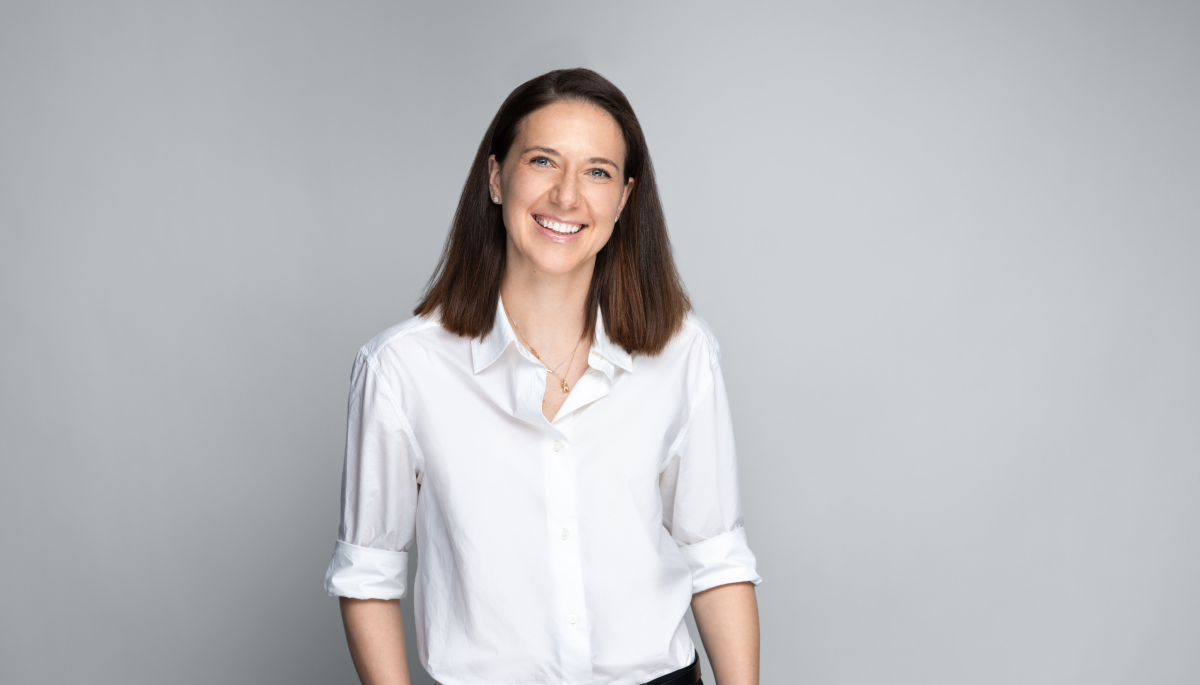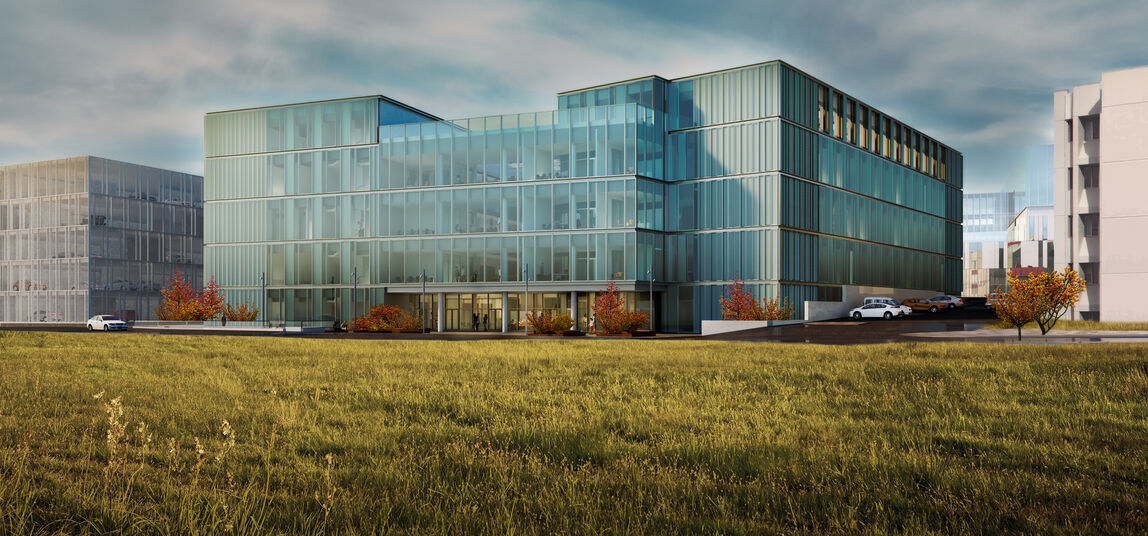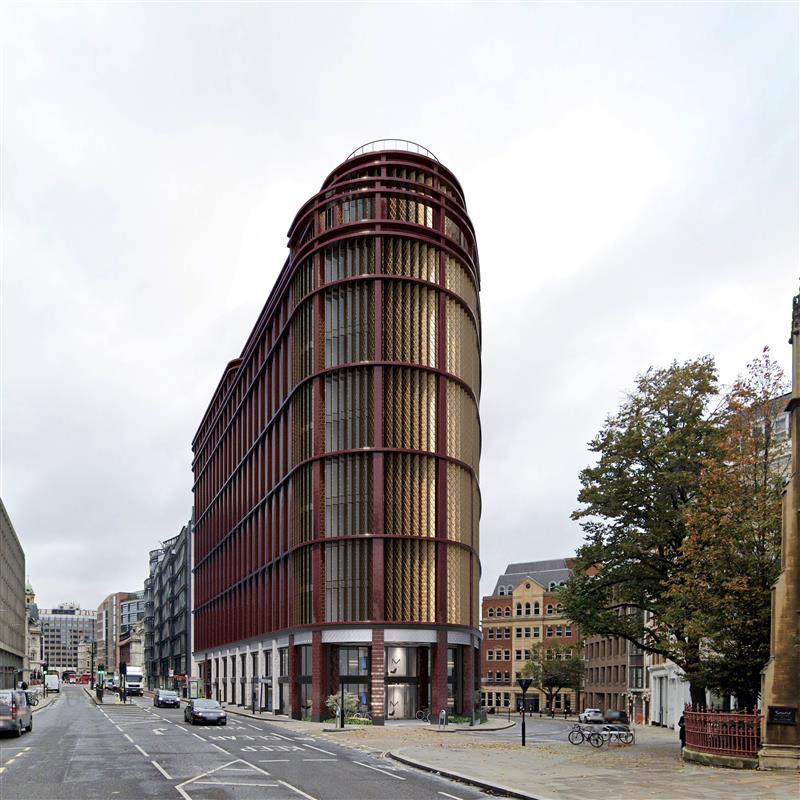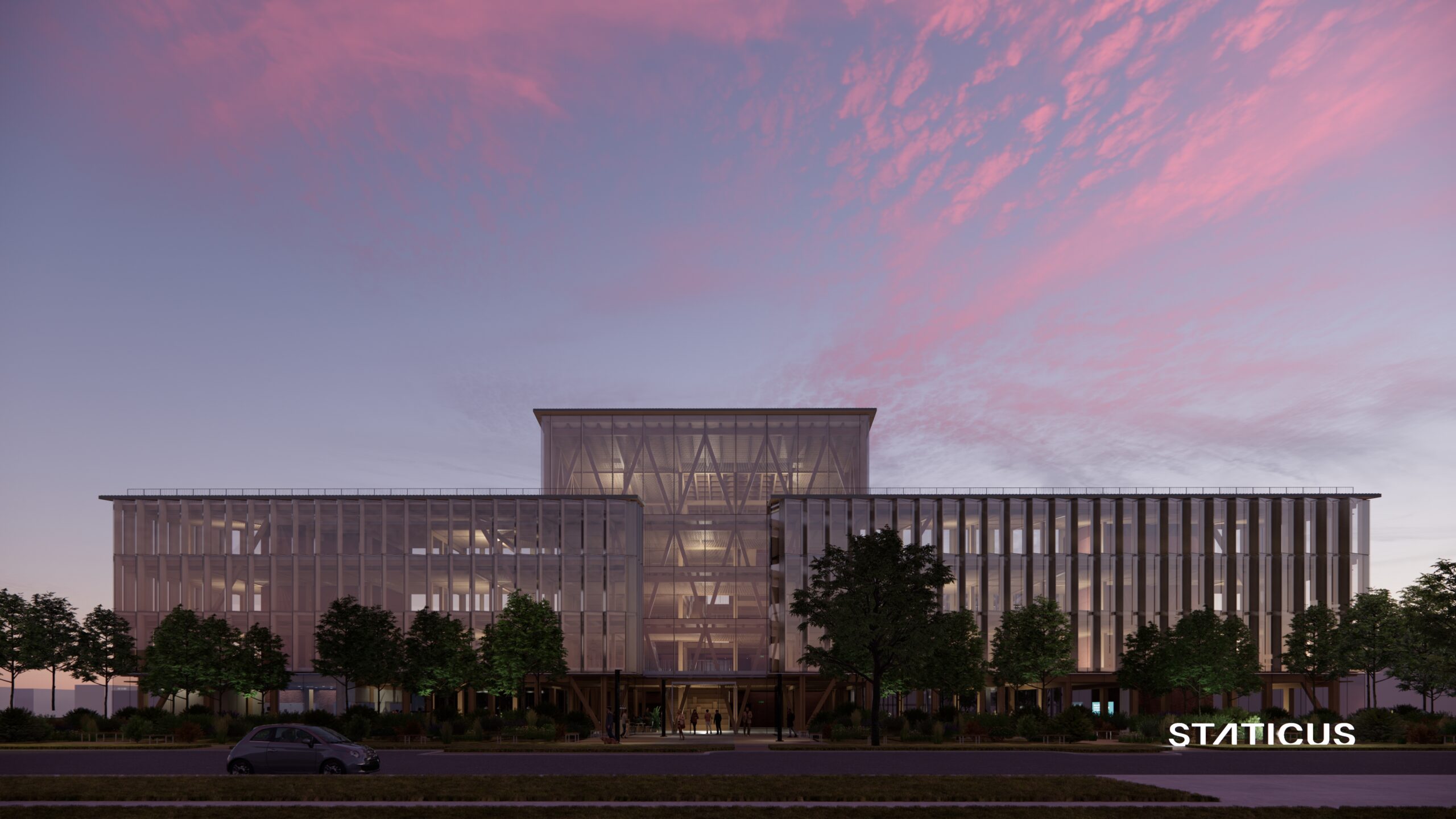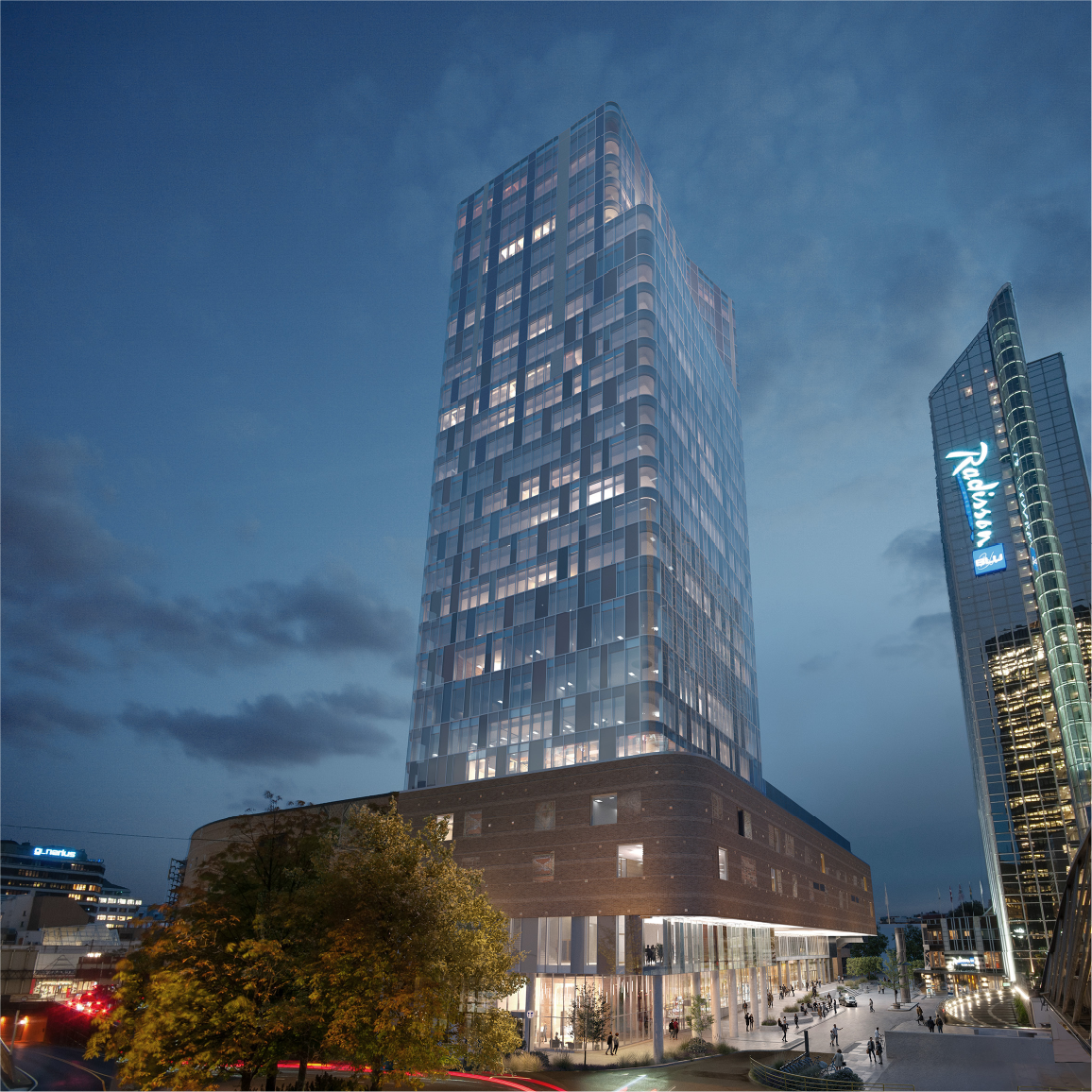By leveraging more than 20 years of experience and embracing the most advanced technologies, our designs produce and install benchmark-setting façades across various European markets. For a company that is constantly developing processes and investing in R&D, driving sustainability in the façade industry is among Staticus’ main goals.
Through the R&D project Staticus Care, we’re developing building envelope and maintenance solutions that make a difference. By substituting aluminium systems with timber and integrating IoT sensors, we aim to better manage the life cycle of façade elements and decrease the façade’s CO2 footprint by up to 75%.
A next-generation sustainable façade
As a company, we have been successfully designing, constructing and installing unitized façades containing wood across Scandinavia for a decade. We have used this expertise to create a next-generation hybrid unitised façade or HUF. This solution can reduce a façade’s embodied carbon by from 45% to as much as 75%.
The key to achieving this is replacing aluminium with timber. Currently, the European average for CO2 generated is 7 kg for every 1 kg of aluminium extrusions produced. In the new hybrid system, aluminium mullions and transoms are replaced with Glulam – glued laminated timber. This is a structurally engineered product made up of layers of wood that are glued together using moisture-resistant adhesives.
And the results are significant. At the product stage, 1.3 kg of CO2 emissions is saved for every 1 kg of Glulam timber used in the façade element. Furthermore, embodied carbon is cut from 8 kg to 2.3 kg for every 1 kg of recycled aluminium used. All together, HUF slashes embodied carbon emissions at the product stage by up to 75% compared to a standard aluminium unitized façade.
But the advantages of the HUF system do not stop there. Hybrid façades also help to save energy over the life of a building. This is because the cellular structure of wood provides outstanding thermal insulation that is 15 times better than concrete, 400 times better than steel, and 1,700 times better than aluminium.
“It even significantly outperforms brick – a 25mm timber board has better thermal resistance than a 114mm brick wall,” says Algirdas Simuntis, Project Manager at Staticus. “As a result, wood is becoming an ever more competitive solution for meeting the increasing thermal demands for buildings required in European building regulations.”
According to Algirdas, Staticus’ HUF also has an advantage over existing standard site-built wood systems when it comes to production and installation:
“Firstly, the elements can be fully prefabricated at sizes ranging up to 10 sq. m. They can then be delivered to the construction site for immediate installation, providing a significant advantage over site-built wood systems. And secondly, thanks to the use of Glulam, the hybrid system is suitable for multi-storey buildings, unlike site-built wood façade systems which can only be used on low-rise buildings in conjunction with exterior scaffolding.”
Finally, using timber has certain aesthetic benefits. Warm and visually appealing, wood creates an attractive indoor environment for building users. It also offers a contemporary architectural aesthetic, adding elegance, character and texture to a building. And from the technical side, using a wood frame design creates a wider range of possibilities for playing with frame connection joints. This makes it possible to fulfil more ambitious architectural ideas.
Having successfully passed through testing at the VINCI Technology Centre (UK), our own’ HUF system was installed for the first time on the Textiltorget project in Stockholm, Sweden. We expect it to be the first of many projects that take advantage of more sustainable façades that do not compromise on performance.
IoT-powered predictive maintenance
Our Staticus Care project team is also looking for ways to integrate Internet of Things (IoT) technology in façades. This project is currently examining the uses of IoT in the predictive maintenance of façades. The culmination of this work will be creating an AI-driven predictive maintenance model.
As Ricardo Seijas, IT Project Manager at Staticus explains, the use of predictive maintenance makes taking care of buildings much more effective.
“At present, facility managers only discover a maintenance need once a problem has actually occurred. This means the maintenance itself is often costly and time-consuming. But IoT offers an excellent alternative. We are now working on developing a sensor-based façade performance monitoring digital twin application for effective façade maintenance.”
A building’s digital twin will combine different types of information provided by IoT sensors integrated into a façade. The model Staticus is working on incorporates live data on temperature, humidity and more. The digital twin can then alert building managers to changes in moisture, pressure or other indicators as soon as they change. This helps them monitor the façade, predict possible malfunctions and take preemptive action to address the issue.
This has several advantages, reduced maintenance costs being the most obvious. But there is also an environmental benefit, says Ricardo:
“Better risk management prolongs the life cycle of façade elements. They become more durable, which results in less costly damage to the façade during the operational phase. This not only saves investors money but also cuts down the environmental emissions of replacing building parts.”
Another positive is the optimisation of the operation of a building. Sensor data can be connected with HVAC systems to ensure optimised running, saving energy and reducing costs.
As a façade developer involvement in the operational phase of a building has been limited in the past. Some estimates suggest this phase can contribute over ⅓ of the façade’s total embodied carbon. Our predictive maintenance model allows Staticus to be involved in reducing emissions across the whole lifecycle of a building.
Through Staticus Care, we’re creating carbon-considerate façades. Developing our own timber-based next-generation hybrid unitised façades and a sensor-driven predictive maintenance tool not only boosts the company’s market offering. It also results in better projects for clients and better sustainability in our built environment. This is very much in line with our commitment to maximising long-term value for clients, partners and society.
The Hybrid Unitized Facade (HUF) system is a part of a project Staticus Care funded by the 2014-2021 Norwegian Financial Mechanism Program “Business Development, Innovation and SMEs” EEA and Norway Grants. The project is being conducted in partnership with Kaunas University of Technology, OsloMet – Oslo Metropolitan University, and SINTEF.
